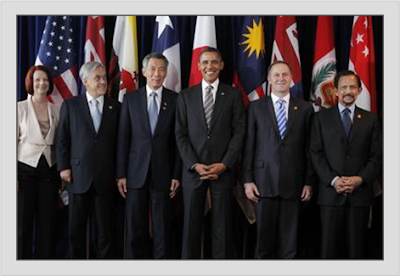
The Police Challenge: Advancing Afghan National Police Training
June 13, 2011
Terrorism in Indonesia After Bashir
July 5, 2011The Trans-Pacific Strategic Economic Partnership Agreement (TPP) represents the Obama administration’s first push toward establishing a true multilateral trade framework for conducting trade negotiations in East-Asia. Even with the prospect of an “early harvest†out of Doha Round (which may in itself imperil any future single consensus agreement), the TPP remains the most promising “advanced pathway to Asia-Pacific regional economic integration.”
Although the TPP is gaining momentum and attracting a larger pool of prospective members, its success is seen as contingent upon the completion of outstanding U.S. free trade agreement, including that with Korea. The South Korea-United States Free Trade Agreement (KORUS), a hangover from the Bush Administration, has yet to be approved by Congress though the State Department estimates that the agreement will result in a $10-$12 billion increase in U.S. GDP, including $11 billion in new merchandise exports. More importantly, KORUS has been described as “the acid test for whether the United States can return to a leadership position on trade.â€
Without the passage of KORUS, there is little hope that the U.S. could forge a gold standard agreement within TPP negotiations and reestablish itself as a proactive diplomatic and economic force in East-Asia. Congressional unwillingness to ratify the relatively benign and uncontroversial KORUS does not bode well for the TPP, which includes more challenging elements such as intellectual property and origination reforms and may directly impact America’s dairy and textile industries. In comparison to the stalled KORUS process, the Korea-EU FTA was recently approved and is due to go into effect next month.
Currently, the nine TPP members are already linked by 25 bilateral or regional agreements; for the United States, the TPP can promote new regional trade relations and reinforce existing FTAs, like that with Singapore, by establishing more consistent trade rules. In the long term, many see the real value-added to the TPP negotiations as its potential to open the door to a Free Trade Area of the Asia-Pacific Agreement (FTAAP).
Beyond the direct economic gains, the TPP is the most apparent representation of American reengagement in the Asia-Pacific region; a place where, historically, close diplomatic and economic partnerships have proven to be the most effective long-term means of maintaining security and fostering prosperity. Recent disputes over water rights in the South China Sea and access to rare earth minerals have caused several regional powers, specifically Japan, Indonesia, Vietnam, and South Korea, to question whether China can provide the type of economic and security partnership they once thought of as a strategic necessity. Cultivating robust regional relationships now through agreements like KORUS and the TPP will pay dividends down the road when the U.S. faces increasingly complex economic and security challenges in Asia.




